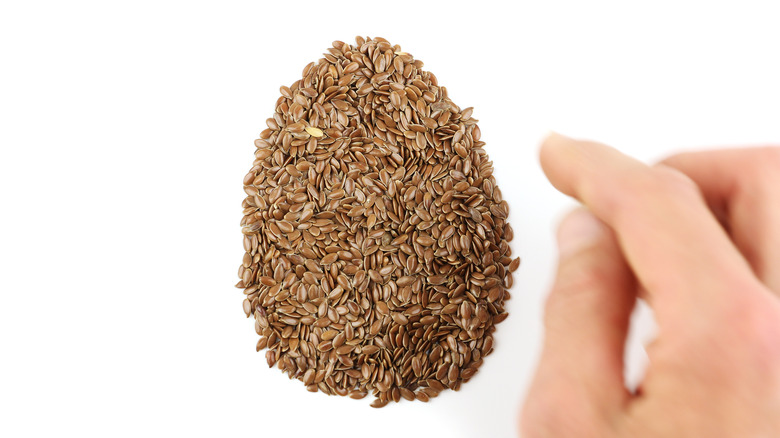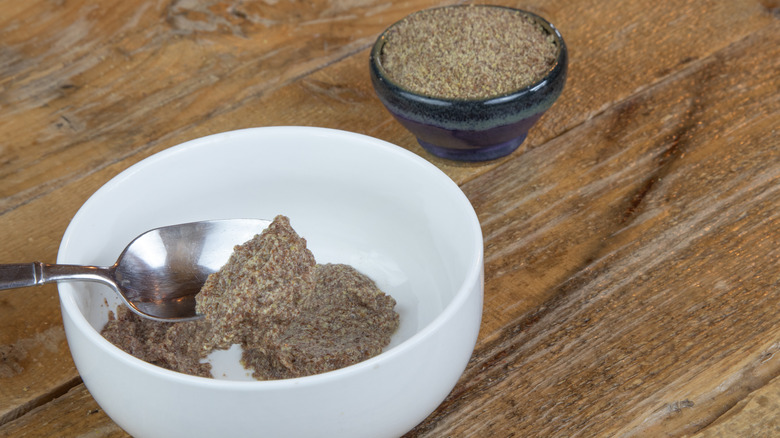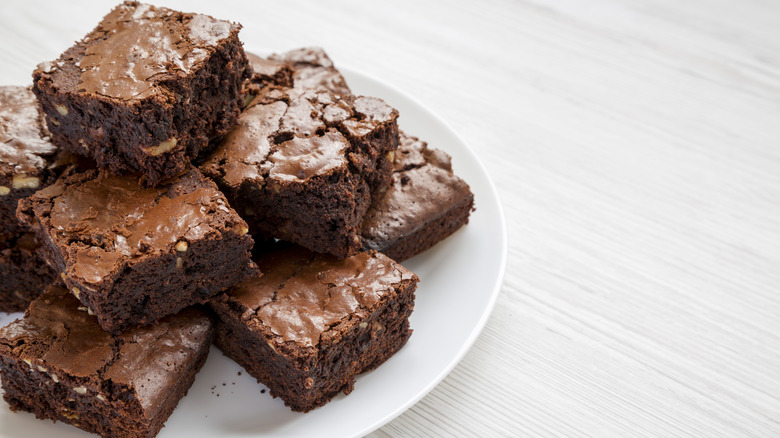What Is A Flax Egg?
Egg substitutes like flax eggs have opened up a whole new world for baking — one that both vegans and people with egg allergies can rely on, not to mention those forgetful bakers who always seem to find themselves without eggs when they most need them. So, if you ever find yourself in a bind, you can take to one of the many egg alternatives like silken tofu, aquafaba, vegetable oil, baking powder, fruit or vegetable puree, and even yogurt to do the real binding for you (per Berries & Lime). Without the eggs, of course.
The options you have are both endless and eggless, the odds are you'll have at least one of these alternatives on hand when you're in a pinch. However, flax eggs are one egg replacement that beats out the others in the simple fact that it doesn't require you to do any math or conversions. The gelatinous mixture of ground flaxseed and water has been used to mimic eggs in baking for years, per Food 52, and the 1:1 between the two means you won't waste any time scratching your head.
How to make a flax egg
To make a flax egg, Food52 claims that you'll need three things: water, ground flaxseed, and about 15 minutes of spare time. While it may not be as simple as cracking an egg, making a flax egg requires minimal effort. Simply measure a tablespoon of ground flaxseed and put it into a small mixing bowl. Then, measure another three tablespoons of water and mix it into the bowl with the ground flaxseed. You'll want to make as many of these as your recipe calls for in eggs, adjusting the measurements as so.
In about 15 minutes, the mixture will start to gelatinize — you'll know it's done once the seeds begin to absorb the liquid and form a thick, goopy substance similar to the effect of adding chia seeds to your overnight oats. But if 15 minutes sounds like too long to wait, there is an option to use boiling water to speed up to process. In this case, your flax egg should be nice and jelly-like in about two minutes. The final texture will be similar to egg whites, hence the name "flax egg." Just be sure to only make what you need since, unlike actual eggs, these won't keep in your fridge.
The best recipes to use flax eggs in
According to Berries & Lime, flax eggs tend to add a nutty flavor and brown-speckled look to your baked goods. While they do a good job of absorbing water, they don't, however, lend well to recipes that need structure. For this reason, flax eggs aren't ideal egg substitutes in recipes that generally call for a high number of eggs or egg whites — think soufflés, meringues, frittatas, high cakes, and enriched breads (per Food52).
On the other hand, flax eggs work wonderfully in recipes that benefit from the moisture they provide, or any recipe that can balance it out with a good amount of flour. Start experimenting with flax eggs in recipes such as baked oats, pancakes, brownies, chocolate chip cookies, pancakes, waffles, and quick breads. They also work well as a substitute in salad dressings that require an emulsifier, making them perfect for a vegan Caesar dressing.


